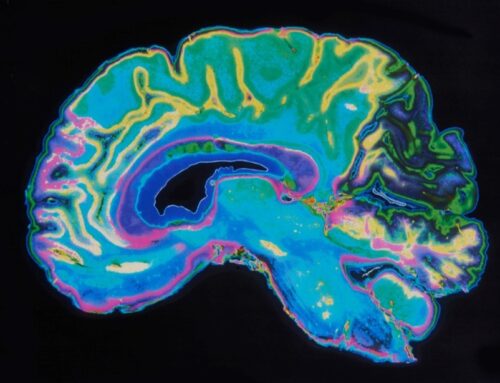History of OSFED Eating Disorder
OSFED (Other Specified Feeding or Eating Disorder) debuted in 2013 in the American Psychological Association’s release of the fifth edition of the Diagnostic and Statistical Manual of Mental Disorders (DSM-V), but the concept isn’t completely new. Prior to OSFED’s inception, anyone who failed to meet the narrowly defined diagnostic criteria for anorexia nervosa or bulimia nervosa received an EDNOS diagnosis – “Eating disorder Not Otherwise Specified.”
Over time, EDNOS became a diagnostic dumping ground, serving as a catch-all diagnosis for patients whose symptomology didn’t fall within the strict criteria for one eating disorder in particular. It erroneously earned a reputation as being somehow less severe than other eating disorders, leading many EDNOS patients to feel as though they had fallen short of having a “real” eating disorder.
About OSFED Eating Disorder
OSFED can be fatal and is not a diagnosis to be taken lightly. The associated risks – electrolyte imbalance, osteoporosis, cardiac abnormalities, dental erosion, etc. – are just as life-threatening as full-threshold anorexia, bulimia and binge eating disorder. Thus, the APA decided to do away with EDNOS all together and added several new and distinct eating disorder diagnoses, including OSFED.
OSFED eating disorder is now the most common type, encompassing an estimated 70% of all diagnoses. It’s characterized by abnormal eating patterns, distorted body image and extreme consciousness of weight/shape. Heightened anxiety around mealtimes and compulsive exercise are common symptoms. OSFED consists of (but is not limited to) five primary presentations:
- Atypical anorexia occurs when all (restricting food, fear of gaining weight) but the weight criteria (less than 85% of what’s expected) are met for anorexia nervosa.
- Atypical bulimia nervosa occurs when all (binge eating, inappropriate compensatory behavior) but the frequency and/or duration (at least once a week for three months) criteria are met for bulimia nervosa.
- Purging disorder is characterized by frequent and recurring purging episodes in the absence of binge eating.
- Atypical binge eating disorder occurs when all (lack of control, eating while feeling full, eating when not hungry, feelings of guilt) but the frequency and/or duration criteria are met for BED (at least once a week for three months).
- Night eating syndrome is characterized by the consumption of a large percentage of one’s daily caloric intake occurring during the night.
Get Help for OSFED Eating Disorder
OSFED is a dangerous disease requiring similar precautions and care to other eating disorder diagnoses. Treatment should involve an interdisciplinary team of professionals, psychoeducation, psychotherapy, cognitive behavioral and dialectical behavioral skill coaching, nutritional counseling and psychopharmacology. Levels of care include the outpatient level, as well as inpatient and residential stays, depending on symptom intensity.
We’re here to help
We know finding care can be tough. That’s why Walden is here for you. If you are concerned that you, or a loved one, may have an eating disorder, please reach out by completing the form on this page or email us at intake_coordinators@waldenbehavioralcare.com to connect with a member of our Welcome Center. Begin your journey to recovery today.
 Rebekah Bardwell Doweyko, LPC, CEDS-S (she/her/hers) is Assistant Vice President, Clinical Operations at Walden, where she is responsible for program development and clinical, administrative, and fiscal oversight of all of Walden’s virtual programs and ambulatory clinics. Bekah has over 20 years of eating disorder experience. Prior to joining us, Bekah was an Intensive Care Manager at the Connecticut Behavioral Health Partnership (Value Options, Inc.) in Rocky Hill, CT. She also founded and directed the Intuitive Eating Program (IOP) at Hollywood Pavilion Hospital in Hollywood, FL, and held various clinical positions at The Renfrew Center in Coconut Creek, FL. Bekah composed the foreword to the highly acclaimed “Maintaining Recovery from Eating Disorders” self-help book by Naomi Feigenbaum and was featured in the Emmy Nominated HBO Documentary “THIN.” Bekah earned her master’s degree in mental health counseling from Florida Atlantic University and is a Licensed Professional Counselor in the State of Connecticut and is a Certified Eating Disorder Specialist.
Rebekah Bardwell Doweyko, LPC, CEDS-S (she/her/hers) is Assistant Vice President, Clinical Operations at Walden, where she is responsible for program development and clinical, administrative, and fiscal oversight of all of Walden’s virtual programs and ambulatory clinics. Bekah has over 20 years of eating disorder experience. Prior to joining us, Bekah was an Intensive Care Manager at the Connecticut Behavioral Health Partnership (Value Options, Inc.) in Rocky Hill, CT. She also founded and directed the Intuitive Eating Program (IOP) at Hollywood Pavilion Hospital in Hollywood, FL, and held various clinical positions at The Renfrew Center in Coconut Creek, FL. Bekah composed the foreword to the highly acclaimed “Maintaining Recovery from Eating Disorders” self-help book by Naomi Feigenbaum and was featured in the Emmy Nominated HBO Documentary “THIN.” Bekah earned her master’s degree in mental health counseling from Florida Atlantic University and is a Licensed Professional Counselor in the State of Connecticut and is a Certified Eating Disorder Specialist.
*This blog post does not necessarily represent the views of Walden Behavioral Care and its management. The Walden Blog is meant to represent a broad variety of opinions relating to eating disorders and their treatment.







